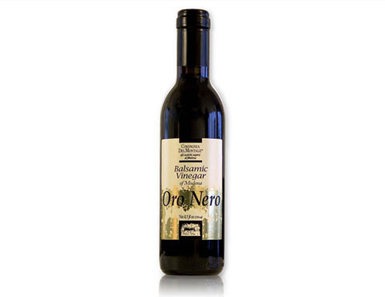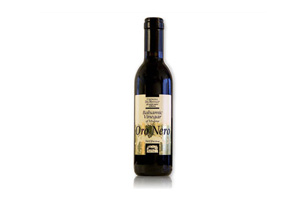
There are three grades of balsamic vinegars: Affinato, Extra Vecchio, and Condimenti (condiment). The primary differences between these grades are ingredients, aging time, and production methods.
Balsamic Vinegar at a Glance:
| Extra Vecchio Vinegar | Affinato Vinegar | Condiment (Condimenti) Vinegars | |
| Ingredients | Only grapes from Modena, Italy | Must include red wine vinegar, other ingredients vary. | |
| Production | Cooked down, aged in casks, tested & graded | Aged or not aged. If aged, can be in cask or in stainless steel. | |
| Age | Min. 25 years | Min. 12 years | Varies |
| Quality | Absolute Finest | Superb | Excellent-Terrible (based on production & ingredients) |
How Extra Vecchio & Affinato Balsamic Vinegars are Made:
Affinato and Extra Vecchio are collectively called Tradizionale (traditional) balsamic vinegars. By law traditional vinegar must be made in Modena, Italy from grapes grown in the Modena region. No other ingredients can be added. Lambrusco and Trebbiano grapes are the most common varieties used.
Production Steps
1. Cooking Down:
First the grapes are crushed into juice and boiled down until they’ve reduced by 1/3rd to ½ in volume. This process can take 13 to 14 hours. The reduced juice is referred to as “grape must.”
2. Long, Slow Fermenting in Cask:
The grape must is then slow-fermented in a series of progressively smaller barrels, made from wood that is selected to impart specific flavors to the vinegar. Over time as it is heated and cooled by changes in the weather, the vinegar evaporates, concentrating its flavor.
Each year it loses approximately 10% of its volume to evaporation. The vinegar is moved into smaller barrels as its volume reduces, but some vinegar from previous batches is kept in each barrel to aid the flavor development and fermentation of future batches.
3. Testing & Grading – Affinato Vinegar vs Extra Vecchio Vinegar
After aging for a minimum of 12 years, balsamic vinegar is eligible to be considered for Affinato status. The vinegar is submitted to the Consortium of Balsamic Vinegar of Modena for testing by a panel of experts who judge it on consistency, flavor, aroma & appearance. If it receives high enough scores it is awarded the Affinato label.
If the vinegar is instead aged for a minimum of 25 years, it becomes eligible for Extra Vecchio status, the finest balsamic vinegar available. The vinegar is judged, and if it receives perfect or near perfect scores, it receives the Extra Vecchio label.
How Condimenti Balsamic Vinegar is Made:
The controls on condiment balsamic production are not as tight as those on traditional balsamics.
This very broad grade covers everything from vinegars aged in wood casks to ones fast-fermented in stainless steel tanks to those that are “no more than ordinary wine vinegar colored with caramel and sweetened with sugar.”*
Oddly enough, the only required ingredient in condiment balsamics is red wine vinegar. If they include grape must, those grapes do not have to be from Modena.
Other common ingredients are caramel coloring, sugar and preservatives…which are used as short cuts in the production process.
Marx Foods Condimenti Balsamic Vinegar:
Our Vigna Oro, Oro Nero, and Vigna Bordo condiment balsamic vinegars contain only grape must and wine vinegar. In addition, the producers insist on ONLY using top quality grapes grown in the Modena region for their must and aging them in-cask.
Post Written by Matthew Johnson
_____________
More Balsamic Information:
Vinegar Recipes
Why are tradizionale balsamic vinegars expensive?
What happened to the numbers on balsamic vinegar bottles?
* Harold McGee, pg 776 On Food & Cooking, Revised Ed.


